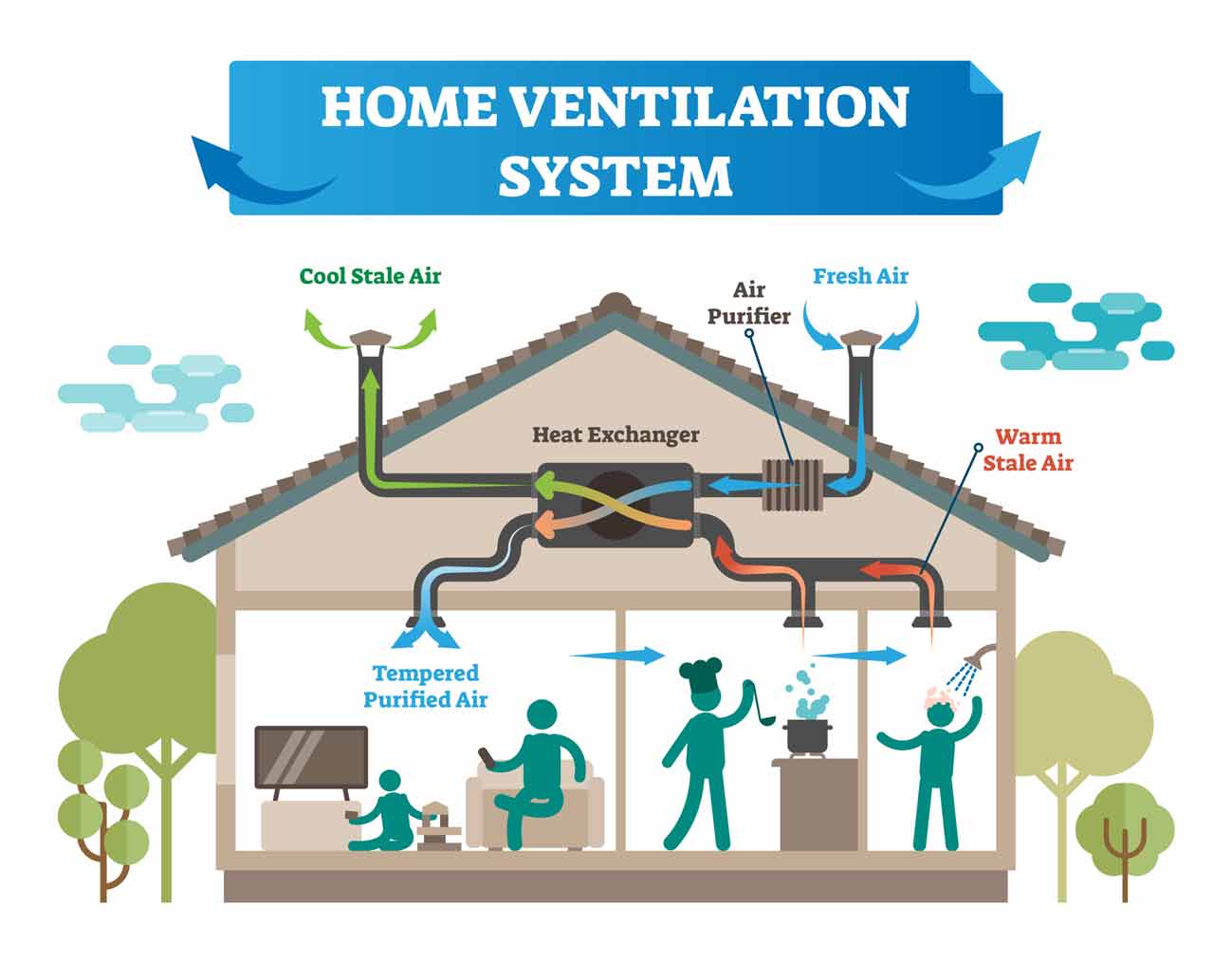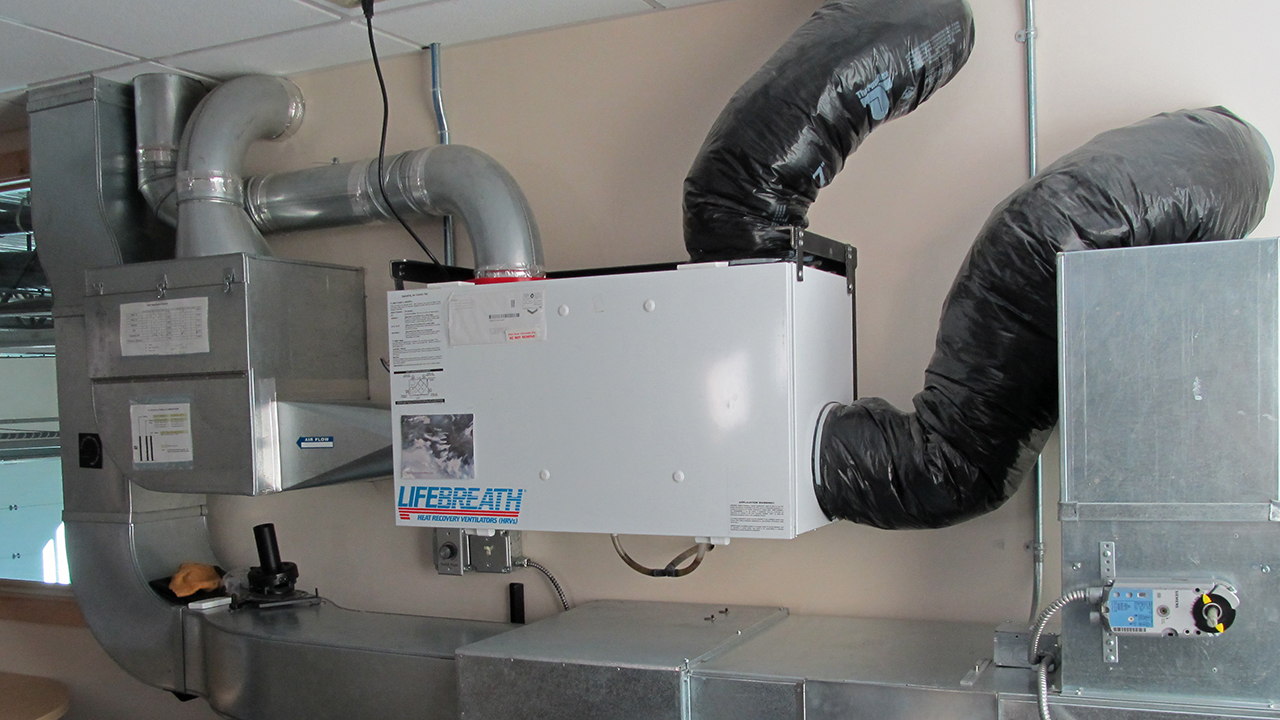How Long Does HRV Perform? Understanding System Lifespan
How Heat Recovery Ventilation Improves Indoor Air Top Quality and Reduces Energy Prices
Heat Recovery Ventilation (HRV) systems play an essential duty in boosting interior air top quality while all at once lowering power expenses. By successfully trading stale indoor air with fresh outdoor air, HRVs assist keep perfect humidity and lower pollutants. Furthermore, their capacity to recuperate warm from outward bound air minimizes the pressure on heating and cooling down systems. As power costs remain to climb, comprehending the complete possibility of HRV systems ends up being increasingly important for house owners and services alike.
Understanding Heat Recovery Ventilation Equipments

Heat recovery ventilation (HRV) systems play a vital duty in boosting indoor air high quality, specifically in modern-day, energy-efficient buildings. These systems are designed to transfer heat from the outgoing stagnant air to the incoming fresh air, therefore reducing power loss while maintaining perfect temperature level levels indoors. HRVs include a heat exchanger, followers, and ductwork, facilitating the continuous blood circulation of air. By eliminating indoor pollutants and introducing fresh air, HRVs assist to balance moisture levels, prevent mold growth, and decrease irritants. The efficiency of HRV systems hinges on their capability to recover approximately 80% of the warm from the tired air, promoting power preservation while guaranteeing a healthy indoor setting. Their combination is important in accomplishing lasting living techniques.
The Significance of Indoor Air Quality
Indoor air quality (IAQ) is an important variable affecting the health and well-being of residents in any type of setting. Poor IAQ can lead to different wellness problems, including respiratory problems, allergies, and fatigue. In addition, it can aggravate current problems such as asthma. Factors adding to low IAQ consist of contaminants from indoor resources like cleaning up agents, mold, and poor ventilation. As a result, maintaining good IAQ is essential for promoting a secure and comfy living or functioning area. Efficient approaches to enhance IAQ involve regular tracking of air top quality, proper ventilation systems, and decreasing making use of unsafe substances indoors. By prioritizing IAQ, individuals can ensure a much healthier setting that cultivates performance and total lifestyle.
Energy Effectiveness Advantages of HRV Solutions
Lots of home owners and structure managers are increasingly identifying the power efficiency advantages of warmth healing ventilation (HRV) systems. By moving warmth from worn down interior air to incoming fresh air, HRV systems noticeably minimize the energy required for cooling and heating. This procedure reduces reliance on typical heating and cooling systems, causing lower power expenses. Additionally, HRVs aid maintain a well balanced indoor environment, avoiding excessive home heating or cooling needs. The ability to recoup as much as 90% of the heat from outward bound air likewise supports sustainability initiatives by decreasing overall power consumption. HRV systems add not just to cost financial savings but likewise to a reduced carbon footprint, straightening with the expanding focus on energy-efficient building methods.
Installment and Maintenance Considerations
The efficient execution of heat recuperation air flow (HRV) systems needs mindful consideration of installation and maintenance aspects to assure peak performance. Correct positioning of the HRV unit is necessary, as it should be installed in a place that optimizes air movement while decreasing sound interruption. Furthermore, ductwork needs to be suitably sized and protected to avoid power loss. Routine maintenance, consisting of filter substitute and system cleaning, is critical to secure optimal functionality and indoor air quality. Proprietors should establish a normal upkeep timetable to determine and attend to prospective issues before they rise. Cooperation with seasoned specialists throughout both setup and maintenance phases can enhance the longevity and effectiveness of HRV systems, ultimately leading to far better interior atmospheres and decreased energy costs.
Real-World Applications and Success Stories
Exploring real-world applications of warmth healing ventilation (HRV) systems reveals their substantial effect on indoor air top quality and power efficiency across numerous setups. In household buildings, property owners have actually reported better air high quality, resulting in less allergies and respiratory system concerns. Schools executing HRV systems have kept in mind enhanced trainee concentration and lowered absenteeism as a result of much better ventilation. Business buildings, such as workplaces and retail areas, have actually experienced lower power prices and enhanced employee performance. As an example, a company office in a temperate climate accomplished a 30% decrease in power expenses after mounting an HRV system. These success tales show that HRV innovation not just adds to healthier environments however additionally provides concrete monetary advantages, making it a valuable investment for different fields.
Frequently Asked Questions
Can HRV Solutions Lower Allergens in Indoor Air?
The efficiency of HRV systems in minimizing interior irritants largely depends upon their ability to filter and exchange air. HRV Heat Recovery Ventilation. By continuously replacing stale air, these systems can considerably decrease irritant degrees throughout interior settings

How Does Humidity Affect HRV System Performance?
Humidity significantly affects HRV system efficiency; high degrees can bring about condensation, lowering efficiency, while low humidity may enhance air exchange. Balancing humidity is vital for suitable procedure and HRV Heat Recovery Ventilation maintaining indoor air quality.
Are HRV Systems Noisy During Operation?
HRV systems can generate varying noise degrees throughout procedure, depending upon their style and setup. Some units operate quietly, while others might create recognizable noise, particularly at higher air flow settings or when poorly maintained.
What Is the Average Life-span of an HRV System?

Can HRV Solutions Be Made Use Of in All Climates?
HRV systems can be used in numerous environments, but their efficiency may differ - HRV Heat Recovery Ventilation. In extreme temperature levels, modifications or additional systems could be necessary to assure suitable performance and comfort while keeping indoor air quality